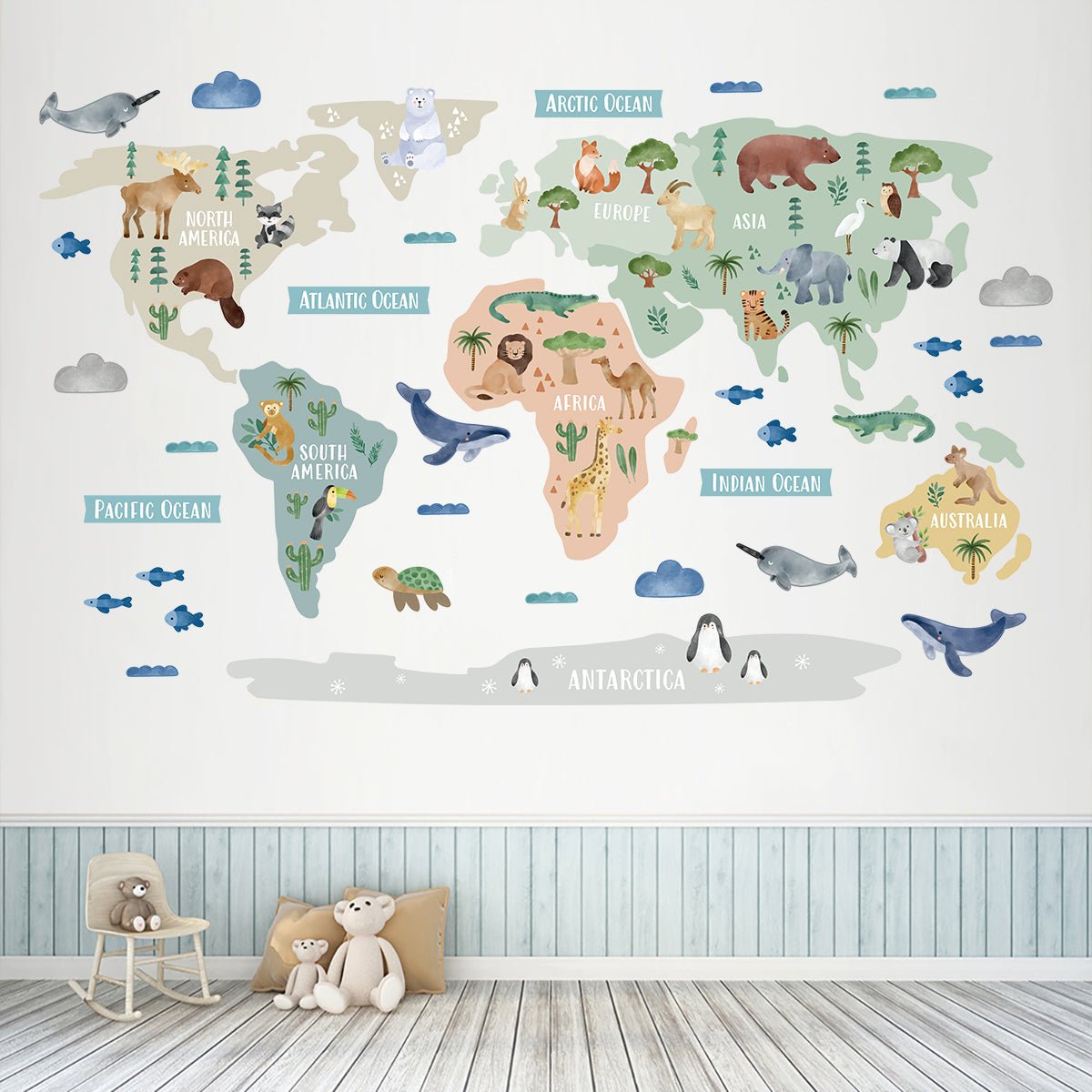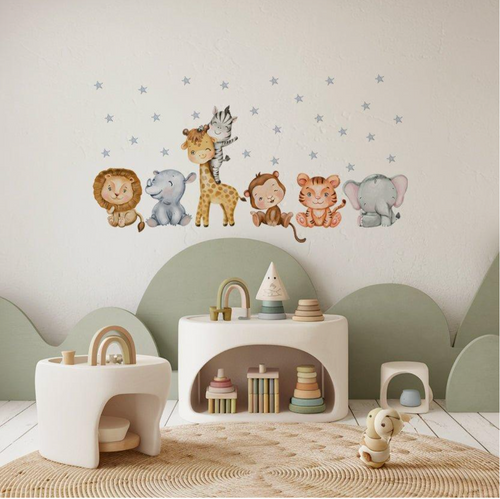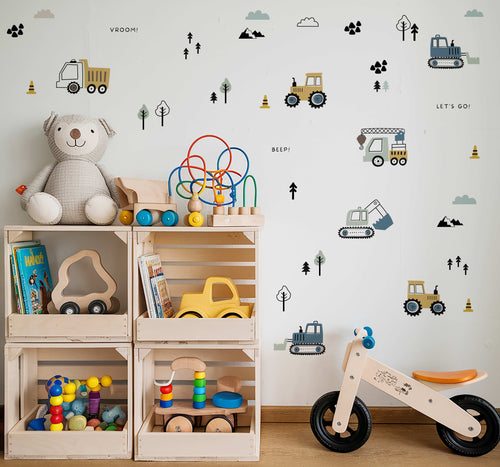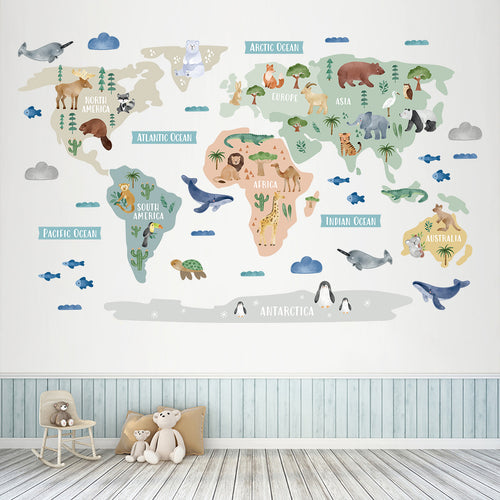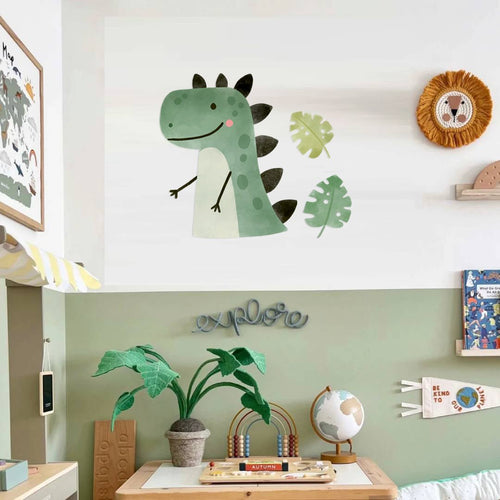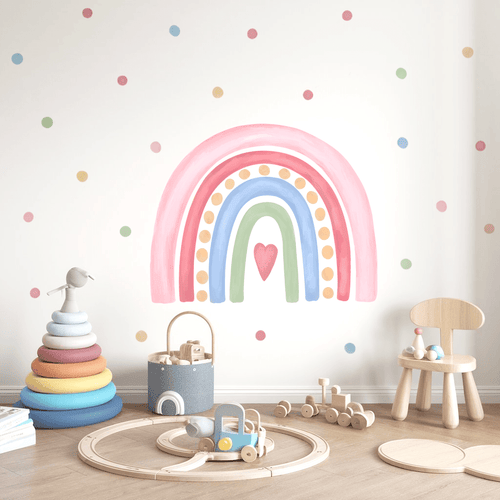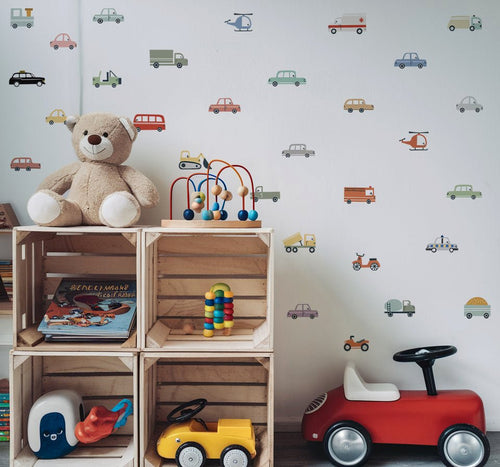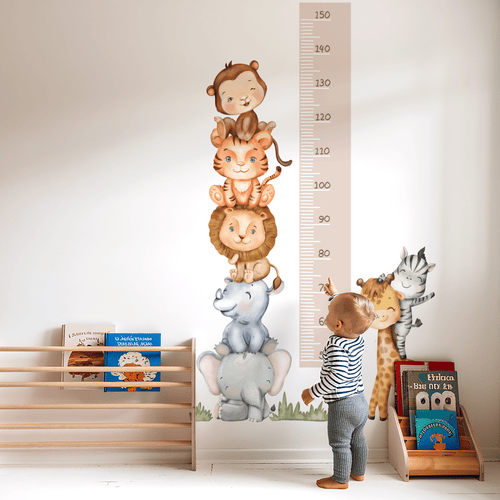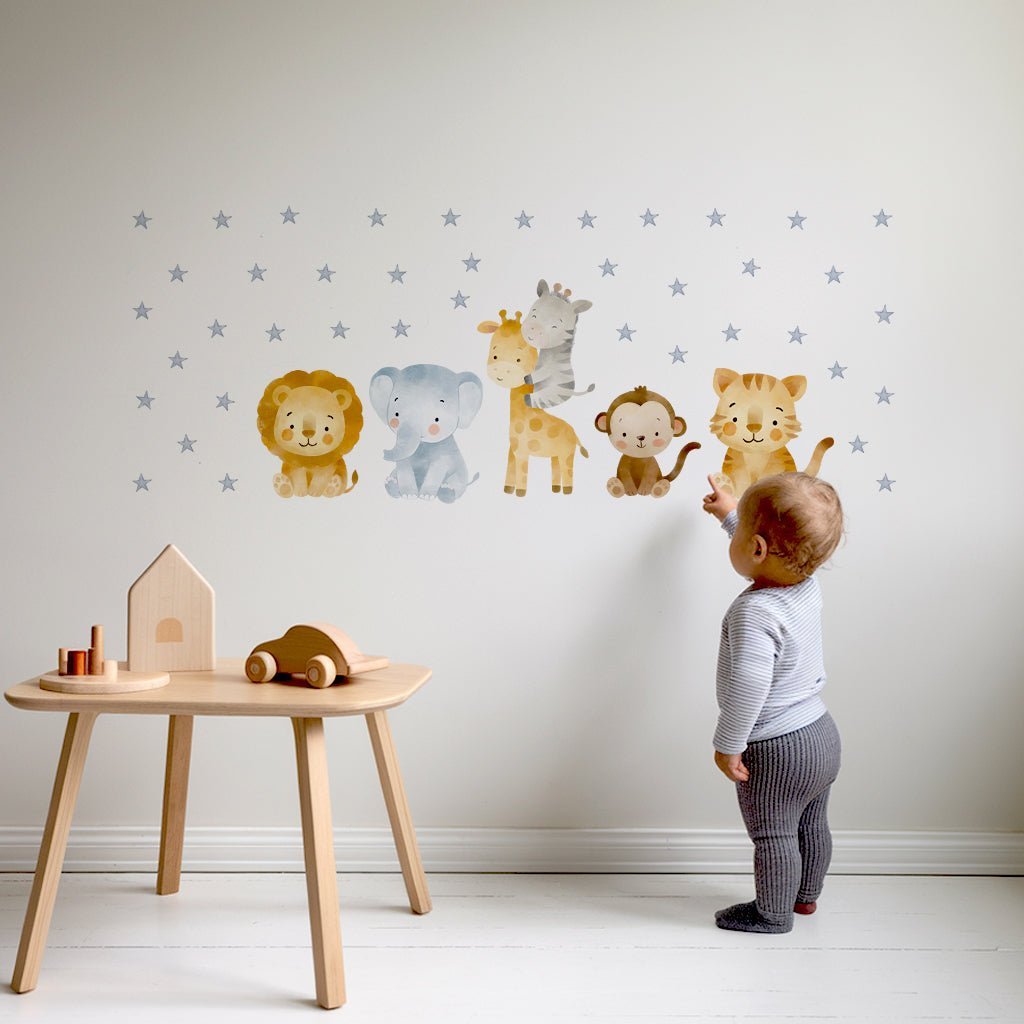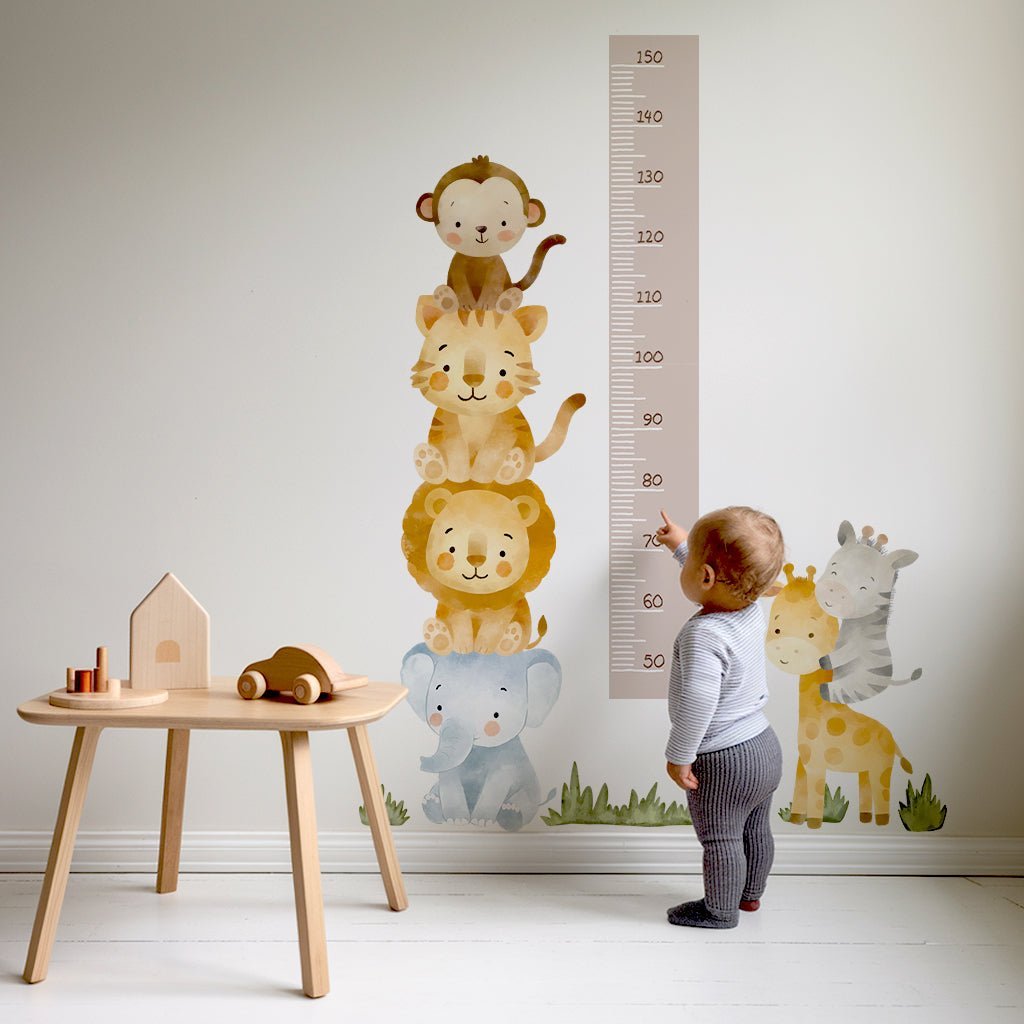In the vast expanse of educational tools, there exists a silent navigator, a guide that has the power to transform the mundane into a thrilling adventure for the young mind. This navigator, often overlooked, is the humble map designed specifically for kids. Unlike the traditional maps that merely chart lands and seas, kids' maps are a vibrant blend of learning and exploration, tailored to spark curiosity and impart knowledge in the most engaging way possible.
Today, we embark on a journey to uncover the essence of kids' maps, their significance in the educational landscape, and how they serve as a beacon for young explorers. From interactive digital maps to the classic paper versions, we'll explore the myriad ways these maps can be a child's companion in understanding the world around them.
The Importance of Kids' Maps in Education
Kids' maps are more than just tools for geographical exploration; they are gateways to a child's comprehensive understanding of the world. These maps are designed with the young learner in mind, incorporating elements that cater to their developmental needs and curiosity.
Let's delve into why kids' maps hold a pivotal role in education, fostering not just knowledge but a love for learning.
Enhancing Spatial Thinking
Spatial thinking is a crucial cognitive skill, allowing individuals to comprehend and analyze the spatial relationships between objects. Kids' maps, with their simplified representations of geography, encourage children to visualize and understand the positioning of continents, countries, and cities, thereby enhancing their spatial reasoning abilities.
Through engaging with maps, children learn to navigate not just on paper, but in real-life scenarios, developing a skill set that is vital in many aspects of daily life and future professions.
Introducing Cultural Awareness
One of the most beautiful aspects of kids' maps is their ability to introduce young minds to the vast array of cultures that populate our planet. Through colorful illustrations and interactive features, these maps can highlight different cultures, languages, and traditions, fostering a sense of global citizenship and empathy from an early age.
This exposure to the world's diversity encourages children to appreciate and respect cultural differences, laying the foundation for a more inclusive and understanding global community.
Stimulating Curiosity and Imagination
Kids' maps are designed to be visually appealing and engaging, often featuring vibrant colors, fun characters, and interactive elements. These features not only capture the attention of young learners but also stimulate their curiosity and imagination.
As children explore these maps, they embark on adventures, envisioning themselves in different parts of the world, discovering new environments, and encountering diverse wildlife. This imaginative play is not only enjoyable but also enhances cognitive development and creative thinking.
Types of Kids' Maps
The world of kids' maps is as diverse as the landscapes they depict. From the traditional paper maps to the interactive digital platforms, each type offers unique benefits and learning opportunities.
Let's explore the various types of kids' maps available and how they cater to different learning styles and preferences.
Interactive Digital Maps
In the age of technology, interactive digital maps have emerged as a powerful educational tool. These maps, accessible on tablets, computers, and interactive whiteboards, offer an immersive learning experience for children.
With features such as zooming, panning, and clickable icons, digital maps provide detailed information about different regions, landmarks, and cultural highlights. They often include games and quizzes, making learning fun and engaging for kids. The interactive nature of these maps caters to visual and kinesthetic learners, allowing children to actively participate in their learning journey.
Printable and Wall Maps
Despite the rise of digital tools, there is still a significant place for printable and wall maps in the educational landscape. These maps offer a tangible experience, allowing children to touch, mark, and interact with the map in a physical space.
Wall maps, often found in classrooms and children's bedrooms, serve as a constant visual reminder of the world's vastness and diversity. They encourage questions, discussions, and a deeper interest in geography and cultures. Printable maps, on the other hand, can be customized and used for specific lessons or projects, providing a hands-on learning experience.
Integrating Kids' Maps into Learning
Integrating kids' maps into educational curriculums and home learning environments can significantly enhance the learning experience. These maps can be used across various subjects, not just geography, to create interdisciplinary learning opportunities.
Let's examine how kids' maps can be effectively integrated into learning activities to maximize their educational potential.
Geography Lessons
Naturally, geography lessons are where kids' maps shine the brightest. Teachers and parents can use these maps to teach about continents, countries, oceans, and geographical features. Interactive maps can bring these lessons to life, allowing children to explore the world with a touch of a finger.
Activities such as locating places on a map, comparing climates, and understanding geographical terms can be made more engaging with the use of kids' maps, making abstract concepts tangible and understandable.
History and Social Studies
Kids' maps can also play a crucial role in history and social studies, providing a visual context for historical events, migrations, and civilizations. By examining historical maps or maps that highlight cultural aspects, children can gain a deeper understanding of how geography has shaped societies and cultures throughout time.
This integration of maps into history lessons helps students to visualize historical events and understand the interconnectedness of different regions and cultures, fostering a more comprehensive grasp of the subject matter.
Art and Creative Projects
Maps are not just educational tools; they are also works of art. Kids' maps, with their colorful and imaginative designs, can inspire creative projects such as map drawing, creating fictional worlds, or designing treasure maps. These activities encourage artistic expression, fine motor skills, and creative thinking.
Incorporating maps into art projects allows children to explore their creativity while reinforcing geographical knowledge and cultural awareness, making learning an enjoyable and multidimensional experience.
The Future of Kids' Maps
As we look to the future, the evolution of kids' maps continues to promise exciting developments in educational technology and pedagogy. With advancements in digital mapping technologies and an increasing focus on interactive and personalized learning, kids' maps are set to become even more engaging and informative.
The future of kids' maps lies in their ability to adapt to the changing educational landscape, offering immersive and interactive experiences that cater to the diverse needs of young learners.
Advancements in Technology
The integration of augmented reality (AR) and virtual reality (VR) into kids' maps is on the horizon, offering unprecedented opportunities for immersive learning. Imagine a classroom where children can don VR headsets and embark on virtual field trips to the pyramids of Egypt, the Amazon rainforest, or the Great Wall of China. These technologies have the potential to transform the map into a dynamic portal to the world, making learning an adventure that transcends the boundaries of the classroom.
Furthermore, the development of personalized learning algorithms can tailor the map experience to each child's interests and learning pace, ensuring that every exploration is as enriching as it is enjoyable.
Emphasizing Global Citizenship
As our world becomes increasingly interconnected, the importance of raising global citizens cannot be overstated. Kids' maps play a crucial role in this mission, providing young learners with a global perspective and an understanding of their place in the world.
The future of kids' maps lies in their ability to foster empathy, curiosity, and a sense of responsibility towards the planet and its inhabitants. By continuing to highlight cultural diversity, environmental challenges, and global issues, kids' maps can inspire the next generation to engage with the world in meaningful ways.
In conclusion, the world of kids' maps is a testament to the power of education to inspire, inform, and transform. As we navigate the ever-evolving landscape of learning tools, kids' maps remain a vital companion in the journey of discovery, offering a unique blend of fun and education that ignites the imagination and fuels the quest for knowledge. Let us embrace these maps as the treasures they are, guiding our children towards a future where they are not just informed about the world but are inspired to change it for the better.
